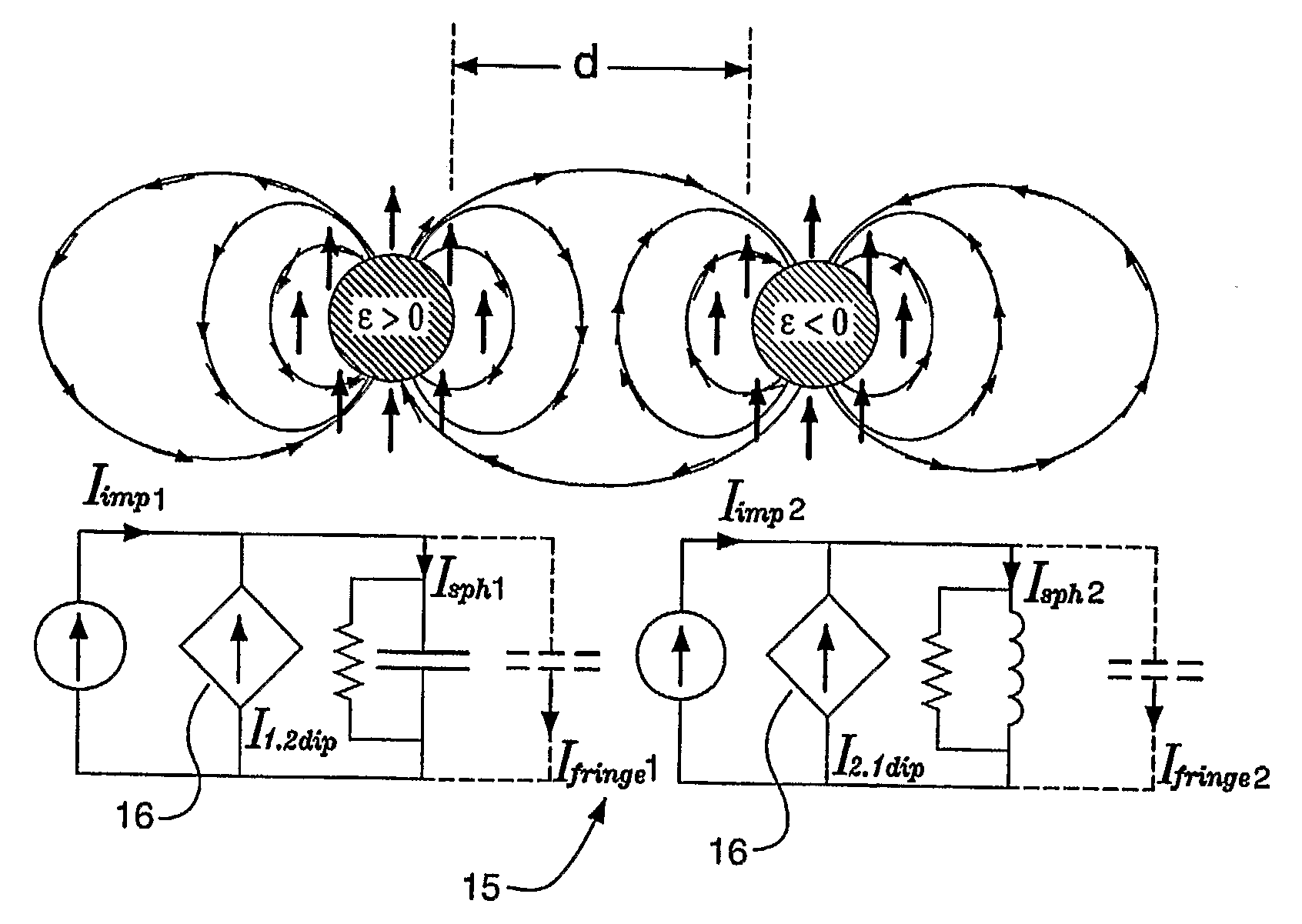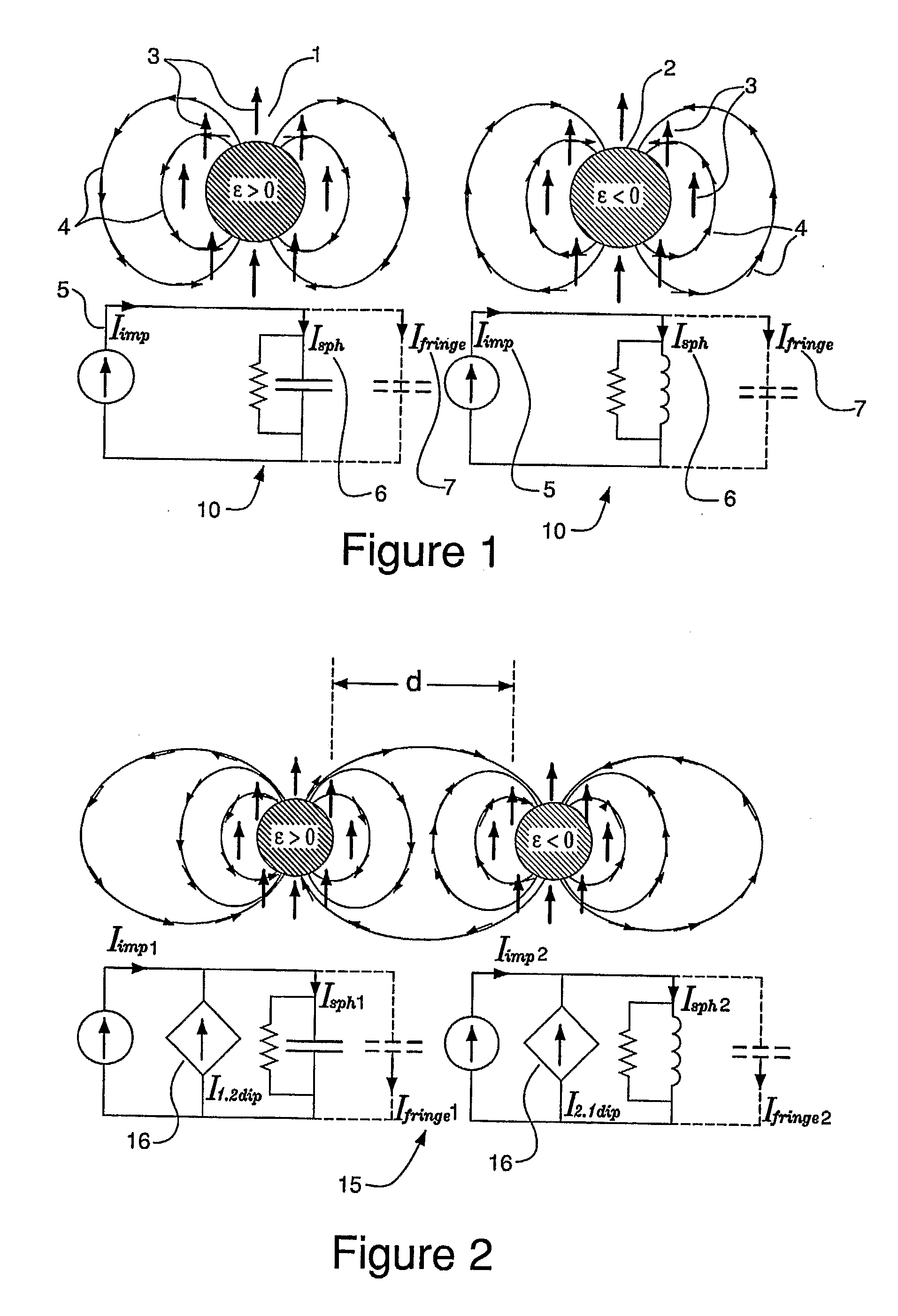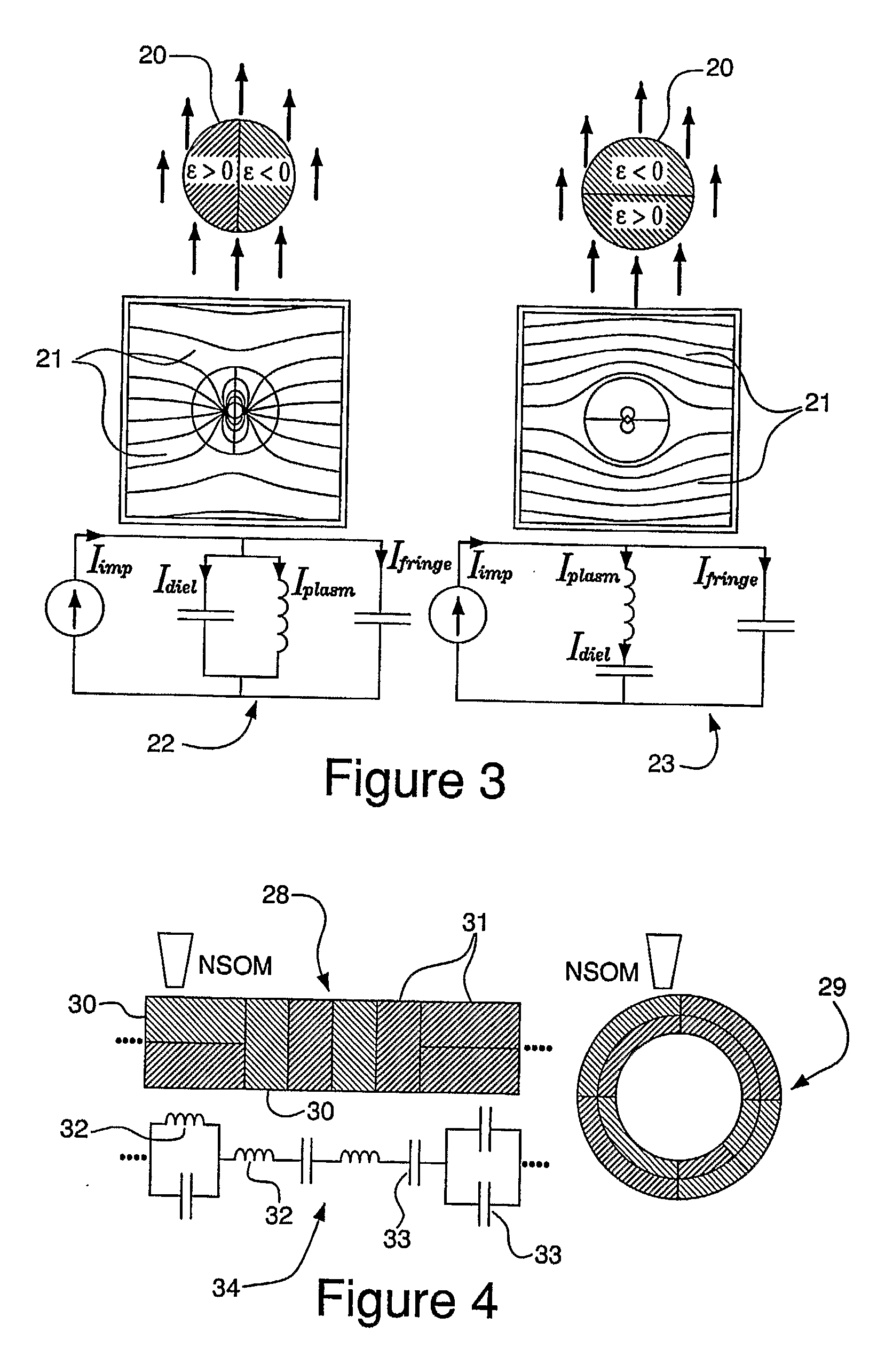Optical Circuits and Circuit Elements and Methods of Forming Same
a technology applied in the field of optical circuits and circuit elements, can solve the problems of not working at frequencies beyond the far infrared, the scaling of circuit components conventionally used in the rf and lower frequencies, and the inability to straightforwardly scale down metallic materials to the infrared and optical frequencies, etc., to achieve positive effective “inductance”, more flexibility, and more degree of freedom
- Summary
- Abstract
- Description
- Claims
- Application Information
AI Technical Summary
Benefits of technology
Problems solved by technology
Method used
Image
Examples
example 1
Nanoinductor Optical Circuit Element
[0059]A three dimensional particle in the shape of a sphere having a radius R=30 nm is formed using silver. At the wavelength λ0=633 nm, the permittivity of silver is known to be ∈Ag=(−9+i0.53)∈0 (See P. B. Johnson, and R. W. Christy, Phys. Rev. B, 6, 4370 (1972)). From Eq. (8), the particle is determined to exhibit nanoinductance Lsph=7.12 femtoH upon exposure to light having a wavelength λ0=633 nm.
example 2
Nanocapacitor Optical Circuit Element
[0060]A three dimensional particle in the shape of a sphere having a radius R=30 nm is formed using Au2S. At the wavelength λ0=633 nm, the permittivity of ∈Au2S=5.44∈0. The nanocapacitance exhibited by the sphere is determined to be Csph=4.53 attoF upon exposure to light having a wavelength λ0=633 mm.
example 3
Left Handed Nanoscale Transmission Line
[0061]A nanocircuit in the form of a left-handed (LH) nanoscale transmission line is formed by depositing a first uniform layer of non-plasmonic nanoparticles onto a substrate. Each non-plasmonic nanoparticle is separated from an adjacent non-plasmonic nanoparticle by a distance substantially small enough to permit optical coupling. This separation distance is maintained throughout the layer. A uniform layer of plasmonic nanoparticles is then elaborated over the first uniform layer of non-plasmonic nanoparticles. As with the first uniform layer, each plasmonic nanoparticle is separated from an adjacent plasmonic nanoparticle by a distance substantially small enough to permit optical coupling. Also, the separation distance is maintained throughout the layer. To this layer of plasmonic nanoparticles, another uniform layer of non-plasmonic nanoparticles is deposited onto the uniform layer of plasmonic nanoparticles. The properties of this layer be...
PUM
 Login to View More
Login to View More Abstract
Description
Claims
Application Information
 Login to View More
Login to View More - R&D
- Intellectual Property
- Life Sciences
- Materials
- Tech Scout
- Unparalleled Data Quality
- Higher Quality Content
- 60% Fewer Hallucinations
Browse by: Latest US Patents, China's latest patents, Technical Efficacy Thesaurus, Application Domain, Technology Topic, Popular Technical Reports.
© 2025 PatSnap. All rights reserved.Legal|Privacy policy|Modern Slavery Act Transparency Statement|Sitemap|About US| Contact US: help@patsnap.com



